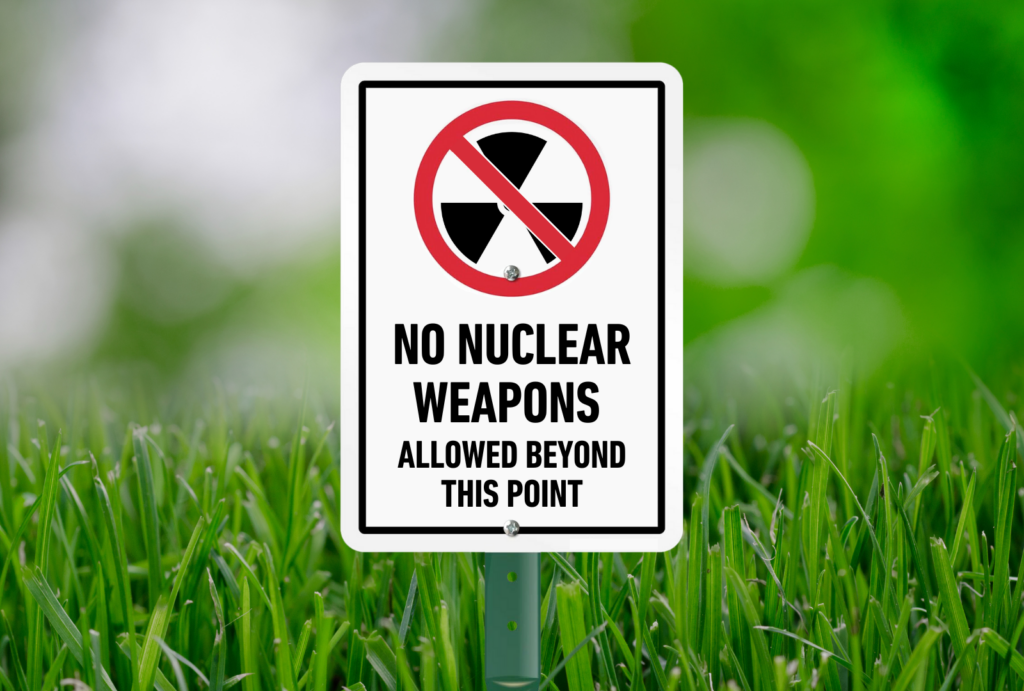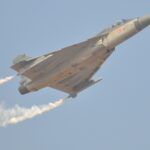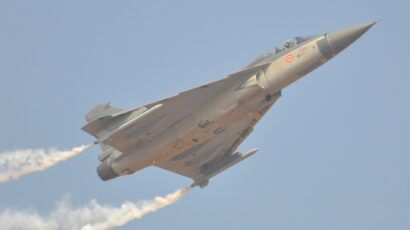Is the spread of regional denuclearization dead? Or a path toward eventual disarmament?
By Ryan A. Musto | February 22, 2024
 Illustration by F. Diaz-Maurin.
Illustration by F. Diaz-Maurin.
Nuclear-weapon-free zones have been a staple of nonproliferation efforts since the mid-1950s. Over the past 60 years, eight denuclearized regions have been created that are recognized by international law: Three for the desolate landscapes of Antarctica, outer space, and the seabed, and five for the heavily populated areas of Latin America (the first such zone, in 1967), the South Pacific, Africa, Southeast Asia, and Central Asia. All together, these agreements cover roughly 120 countries, most of the southern hemisphere, and close to two billion people.
But no new nuclear-weapon-free zone has entered into force since 2009. Next year will mark the longest stretch without a pact since the concept first came into existence. This makes one wonder whether progress in regional denuclearization is dead and, if that’s the case, what can be done to revive it.
Why regional denuclearization matters. Nuclear-weapon-free zones (NWFZs) enhance regional security and sovereignty and are tailored to meet local realities and historical legacies. They have been used to prevent a second Cuban Missile Crisis, bolster environmental security against the impacts of nuclear testing, and help maintain the removal of nuclear arsenals from areas in the post-Cold War world. These zones have also been used to guard against rising threats, such as those posed by China and illicit proliferation networks. Denuclearized areas have historically been spearheaded by non-nuclear states in large part from the Global South powered by strong anti-colonial impulses.
Although regional in scope, NWFZs have an eye to global change and have been instrumental in that quest. Latin America’s 1967 Treaty of Tlatelolco set an important precedent for the global 1968 Nuclear Non-Proliferation Treaty (NPT), reconciling the commitments of nuclear and non-nuclear states. Emboldened by the Latin American achievement, Mexico demanded nuclear powers take steps toward disarmament and assist non-nuclear states with the peaceful development of atomic energy. Such amendments helped shape the NPT’s final form and its “grand bargain” between the nuclear haves and have-nots. Nuclear-weapon-free zones are also recognized as having helped pioneer the bottom-up, humanitarian approach that led to the 2017 Treaty on the Prohibition of Nuclear Weapons, also known as the ban treaty.
The provisions of NWFZs exceed the NPT’s for members under their jurisdiction. In Central Asia, the Treaty of Semipalatinsk requires that all regional states adhere to the Additional Protocol for stringent safeguards of the International Atomic Energy Agency (IAEA), abide by the Comprehensive Nuclear Test Ban Treaty (CTBT), physically protect loose nuclear materials that might end up trafficked, and pursue environmental remediation in the wake of Soviet-era nuclear testing in the area. In Africa, the Treaty of Pelindaba responds to the 1982 bombing of the Koeberg nuclear power plant in Cape Town, South Africa—the continent’s only—and an Israeli bombing of a nuclear reactor in Iraq by banning attacks on nuclear installations.
NWFZs go beyond the NPT’s provisions to restrict the nuclear-armed powers, most notably with legally binding protocols. To help ensure their efficacy, all NWFZs require negative security assurances by the treaty’s five nuclear weapons states (the five permanent members of the UN Security Council, or P5) not to use or threaten to use nuclear weapons against their regions. Depending on regional histories, they can also restrict deployments in colonial territories and nuclear testing.
One must not overstate the ability of NWFZs to impede the P5. These zones have allowed for such items as freedom of nuclear transit through the zones and interpretative statements that help preserve jurisdiction over colonial holdings. The venues and tools used to secure NWFZs, such as with UN resolutions and IAEA safeguards, are also oftentimes of superpower creation. Nuclear-weapon-free zones have been referred to as “obedient rebellion,” an approach to nonproliferation that simultaneously seeks to overthrow an unequal nuclear order while playing within its bounds.
But in flexibility there can be strength.
For example, a recent research paper shows that acquiescence to US demands on nuclear transit allowed Latin American countries to get the broader nuclear-free pact they wanted while pursuing the issue elsewhere.
A bleak outlook. Prospects for new nuclear-weapon-free zones are currently not good—as is the case for the arms control landscape more broadly. The regions with conditions most conducive to denuclearization already have pacts, leaving areas with more challenging nuclear security dynamics. Some proposals for NWFZs have been untouched since the Cold War, including those for Central Europe, South Asia, and Scandinavia. The two most prominent denuclearization proposals over the past decade have been made for the Korean Peninsula and the Middle East—initiatives that both face immense hurdles.
The push to denuclearize the Korean Peninsula brought NWFZs back into the mainstream lexicon in the 21st century. While the idea dates to the mid-1950s, North Korea tested its first nuclear weapon in 2006 and continues to modernize its arsenal for reasons of security and prestige. Two summits on denuclearization between US President Donald Trump and North Korea’s leader Kim Jong-un led nowhere—only highlighting that both sides define the issue quite differently.
A similar dead-end exists for the proposal to denuclearize the Middle East, which must deal with a nuclear-armed Israel. The idea of a Middle East NWFZ dates to the 1950s and gained prominence in 1974 when Egypt and Iran co-sponsored a UN resolution calling for its creation. In 1990, Egypt broadened the initiative to include all weapons of mass destruction, in part so that regional non-nuclear countries could offer something, such as relinquishing chemical weapons, in return for Israel’s denuclearization. But progress faces immense hurdles. Israel has shown no interest in giving up its nuclear arsenal (or even officially admitting it has one), the United States is disengaged, Iran remains a wildcard, and proper membership for an expansive region is ill-defined.
A slow path to progress. Even if no new zone is on the horizon, progress toward denuclearization can still be made by strengthening existing agreements and the norms that underwrite them.
Alarming intelligence that Russia may deploy a nuclear weapon in orbit could shoot the 1967 Outer Space Treaty to the top of the list of those that need bolstering. Perhaps the best example though is Southeast Asia’s Treaty of Bangkok, the only zone without the formal support of any of the P5. NWFZs allow for freedom of transit of nuclear weapons through the area, either by sea or by air. But the Treaty of Bangkok is seemingly an exception. The zone’s reach 200 miles out to sea threatens to limit the ability of nuclear superpowers to strike enemy vessels within a vast expanse of critical open ocean in the Indo-Pacific or launch an attack from within the zone to strike elsewhere, making it particularly anathema to a country like the United States and its robust sea-based deterrent.
Despite an evident limitation to its nuclear strike capability, China has recently declared—and reiterated—its willingness to adhere to the Southeast Asian NWFZ, a move squarely aimed at its adversaries in the region, which include AUKUS (a trilateral security partnership between Australia, the United Kingdom, and the United States). Regardless of intent, it gives Southeast Asian nations an opening to cement a commitment from a P5 member and further leverage the issue with the others as the region seeks a solution on navigation rights workable for all.
Beyond their regional scope, NWFZs can also serve to strengthen global security regimes and norms. Africa’s unique prohibition of attacks on nuclear installations, for example, could be replicated by the international community in the face of Russia’s ghastly actions against Ukraine’s Zaporizhzhia nuclear power plant. The value of NWFZs is also evident amidst differing global models. Much is made of the contradictions that exist between the non-proliferation treaty and the ban treaty, but NWFZs are a glue that can bind them together. NWFZs are explicitly endorsed by both treaties and historically helped shape them both. Regional pacts can be a useful lens through which to gaze upon the efficacy of global counterparts.
As superpower arms control agreements dissolve, NWFZs can offer a way forward. The P5 can draw upon regional pacts to reassert their commitment to stopping the proliferation and use of nuclear weapons. One recent example comes from the United States—the least committed to NWFZs among the P5 countries. In the wake of Russia’s violation of its security guarantees to Ukraine under the Budapest Memorandum, US State Secretary Antony Blinken reasserted the US commitment to negative security assurances for all the NWFZ treaties it had signed.
The path to global nuclear disarmament may start at the regional level. As former US senior diplomat Thomas Graham argues, NWFZs offer an important “alternate route toward zero nuclear weapons.” This idea fits with their intent. At a 1975 UN conference to define NWFZs, leading member Mexico declared a guiding principle: the need to “gradually widen the zones of the world in which nuclear weapons are outlawed until the territories of the States that persist in possessing them become, as it were, contaminated islets under quarantine.”
Editor’s note: The statements made and views expressed in this article are solely the responsibility of the author. This article is a product of the Perry World House 2023 Global Order Colloquium which took place on September 27–28, 2023.
Together, we make the world safer.
The Bulletin elevates expert voices above the noise. But as an independent nonprofit organization, our operations depend on the support of readers like you. Help us continue to deliver quality journalism that holds leaders accountable. Your support of our work at any level is important. In return, we promise our coverage will be understandable, influential, vigilant, solution-oriented, and fair-minded. Together we can make a difference.
Keywords: NPT, NWFZ, P5, TPNW, denuclearization, disarmament, nuclear-weapon-free zones, weapons-free zone
Topics: Nuclear Weapons
















Signatories to the UN Treaty on the Prohibition of Nuclear Weapons are effectively agreeing to be a nuclear free zone as per the terms of the treaty, and 93 nations are currently participating, with The Bahamas joining in September, 2023. Progress has been slow, but the treaty is in effect and binding on the signatories, none of whom allow any nuclear weapons anywhere in their territory, air space or territorial waters.
Above fails to mention that after India exploded nuclear device in 1974, Pakistan in response submitted a proposal to UN/Security Council to declare South Asia’s nuclear free zone, but India instead of agreeing to the proposal again carried out nuclear tests in 1998.